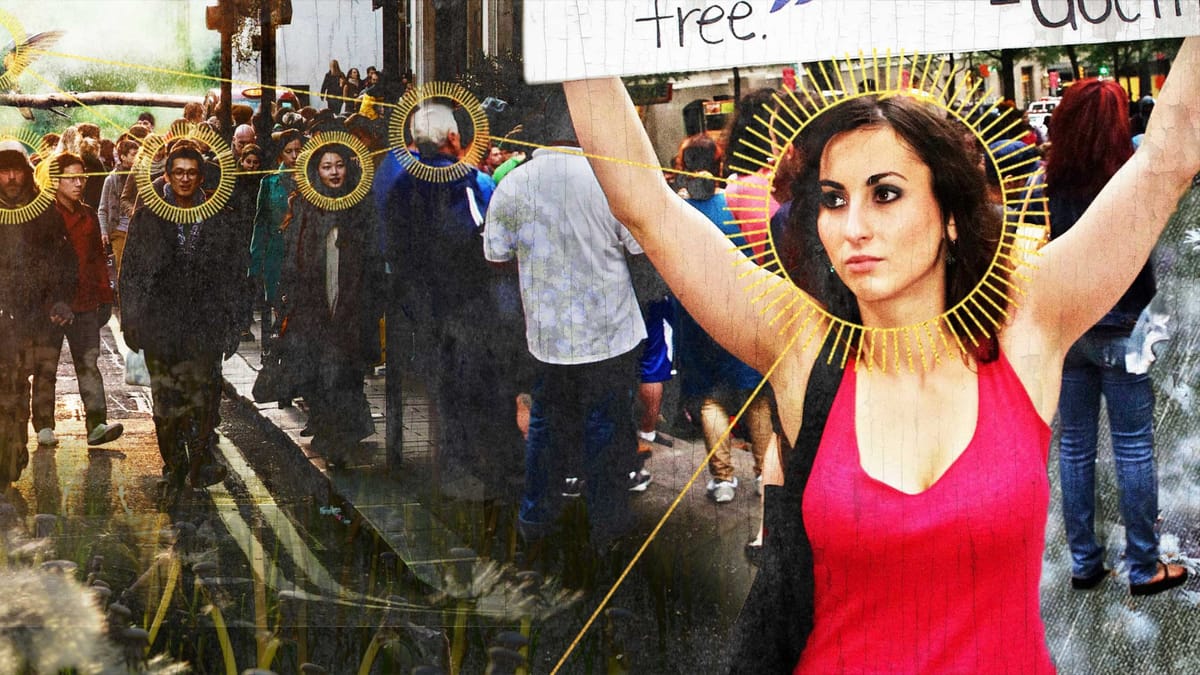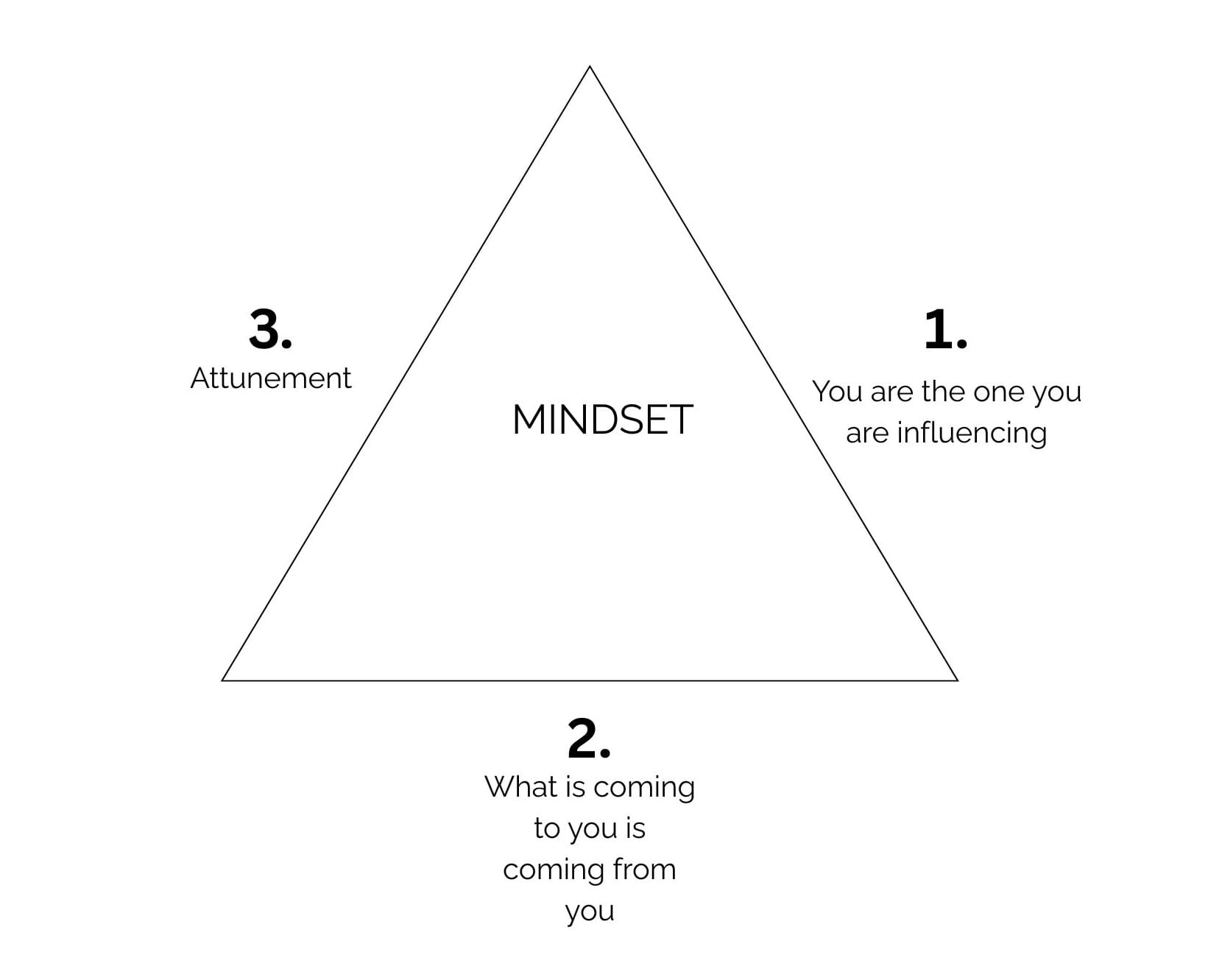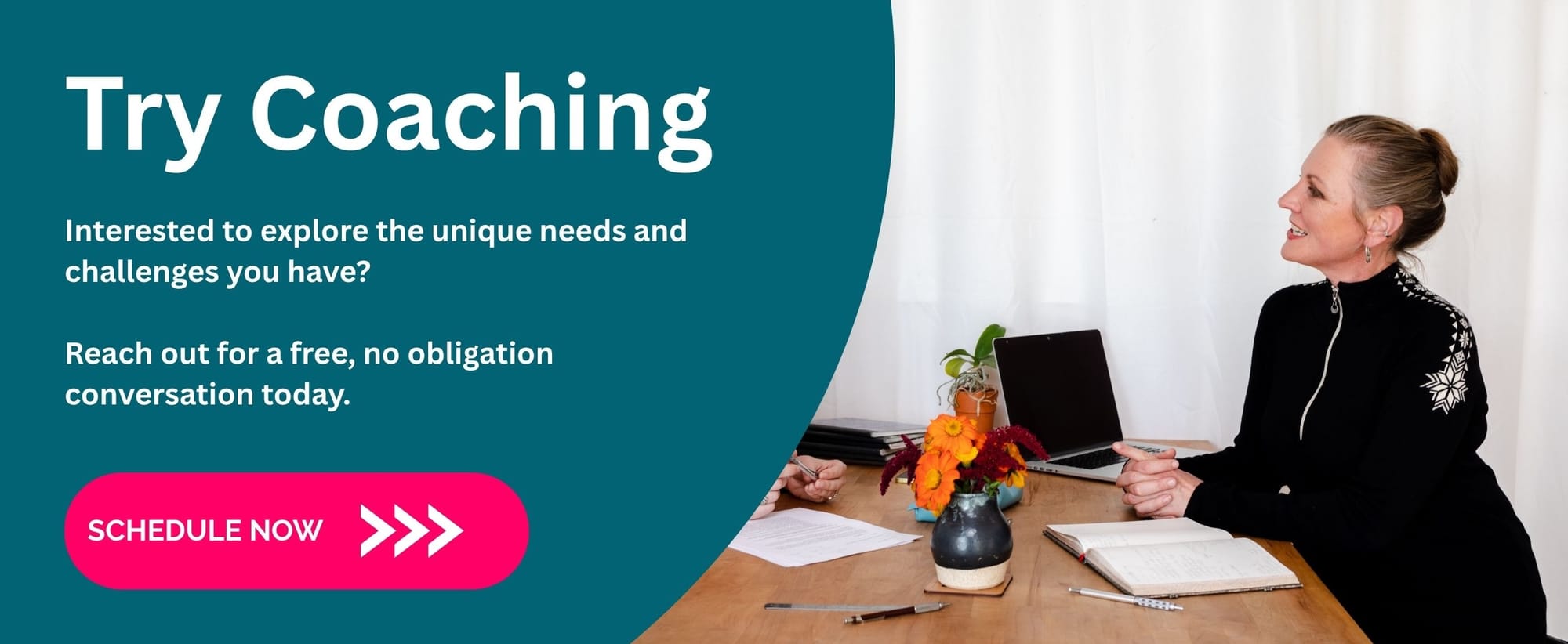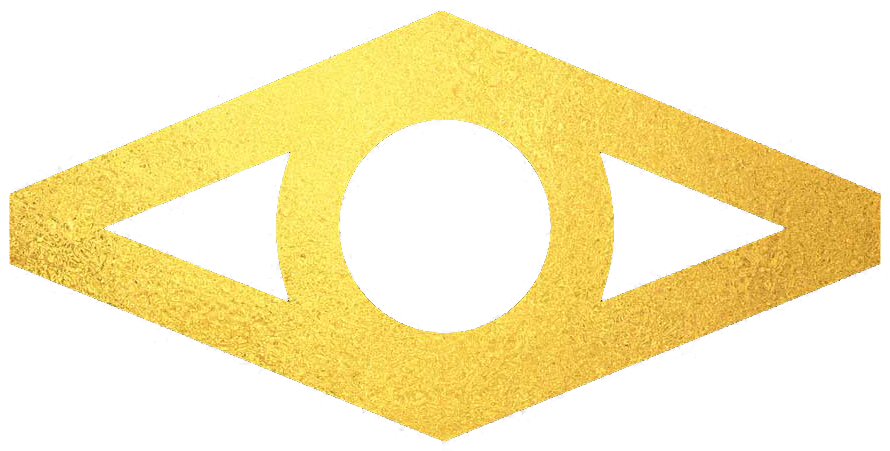A Framework For How We Can Change Our Minds

Dear reader,
My favorite thing to do when coaching or writing is to discover how far upstream one can go in researching and exploring a particular limit or issue. In doing so, I have found that the problems that we experience in life often have their causes and effects far apart in space and time, making insight difficult to get to.
I have found, for example, that my own limits and fears usually arise from the ways I’ve internalized childhood experiences — which were admittedly a long time ago — those in particular that have remained unexamined and therefore still active within me.
It’s not that I necessarily have to go back into childhood to relive painful moments, but that I get to know how the patterns and expectations are still active within me as a long-held habit playing out in my current reality, operating below my awareness.
However, if we do discover the causal nature — I mean in the current reality of our habits of thought and feeling — we enable a transformation and freedom that results in the symptoms and distress disappearing on their own. We find that we don’t have to “fix” them.
This is, briefly, my version of mindset shift.
There is a great deal of talk and information out there about mindset. There are books, courses, and whole careers focused on this popular topic. You may already be familiar with some of the big names who talk about it, such as Tony Robbins, Jay Shetty, Eckhart Tolle, and many others.
And while I guess many things they say are probably right and helpful, I want to introduce to you another way to think about it. I made a framework to show you what I believe is most important when focused on mindset, and how a change in mindset is achieved.
One important thing to know about mindset shift and how you know you’re on the right track is that you always have to let go of the old mindset before a new, healthier mindset can stick.
Here’s another way to describe this: everything I write, everything I advise to others, and the work I do on myself is always going to involve the sacrifice of what is lower, wounded, and lesser in you for the sake of what is higher, emancipated, and greater in you.
This is why, for example, I talked a lot about 100% responsibility in my last newsletter and why it is so important on a path of healing and regeneration for the inner life. You have to sacrifice the satisfaction of blaming others so you can take back your agency by emancipating yourself from victimhood.
This process of sacrifice and resulting emancipation, in a nutshell, is how inner growth actually is able to take place. Otherwise you are a “full cup”, unable to take in and integrate the lessons of life and turn them into medicine for yourself and others.
You have to empty out from what is keeping you internally chaotic, full, and without any bandwidth FIRST before something new like a breath of fresh air can come into your life.
Letting go of what is holding you back can be very challenging (who am I without my dysfunctions?!?), so changing your mind is easy to talk about but difficult to accomplish.
I boil it down to three main activities, which I offer to you in my framework, the Mindset Instrument:

1: You are the one you are influencing
Let’s discuss leadership for a moment. What is leadership? We probably first think of influencing and guiding others toward achieving a particular goal in a company setting or a project.
But if we broaden the definition some, it also applies to influencing the people and the circumstances around us through the radiance of our presence and convictions.
So how does one actually do that? Luck? Personality? Charisma?
Or mindset?
I’d like to propose that what creates all of the above — luck, personality, charisma, AND mindset — is driven by what you carry around with you in your inner life — the light as well as the shadow.
You could say that learning how to change your mindset is really about learning how to influence yourself first, before trying to influence others.
The reason why I say “influence yourself” rather than try to influence others, is to help you understand the quality of your presence, and how that is radiating out around you.
Have you noticed when someone walks into a room and their very presence shifts the mood in the room toward more tension? Suddenly everyone can tell there is something going on for that person even though they haven’t said or done anything yet.
And have you noticed when another sort of person can shift the atmosphere in the room as soon as they walk in, engendering a sense of warmth, love, or engagement? People seem to sit up straighter, and feel lighter.
These are more obvious ways we already influence the space around us in either negative or positive ways. We do this with the qualities we carry in our inner landscape, and for most of us, we are completely unaware of how much we influence the mood in the room. We believe that our inner landscape is hermetically sealed off from everyone around us, and we may indeed by very good at hiding our true feelings.
The key here is that really the only person you need to influence is yourself because everything else flows downstream from what you are thinking and feeling within. What you are harboring within IS GOING TO radiate out from you in quite intangible ways such that the circumstances of your life — your relationships, the outcomes of your efforts, your life in general — are constantly shaped by it.
And others around you are continually affected by your radiance — or lack of it. This is the secret to stage presence, by the way. Are you present and in your body, able to hold the audience in your field of attention, or are you inwardly dissociated and checked out? It has less to do with fear and nerves, and more to do with embodiment — something that resides outside of our control until we learn how to consciously be present and in our bodies, or are naturally embodied.
We’re going to get into radiance in the next part of the instrument, but for now I want you to spend a moment with this idea: you are the greatest influence in your life — specifically, what you allow to “build its nest within you” as beliefs, assumptions, conclusions — with all the attending feelings — about yourself and how the world is.
We are prisoners of our inner world until we become aware of it and how much it inhibits and cages us.
Let’s build on this idea with part two of the instrument.
2: What is coming to you, is coming from you
Now we are able to get into a deeper layer of mindset, where we’re going to explore our thoughts, and the feelings that always accompany them.
At one point in your life you thought a thought for the first time, let’s say that people shouldn’t be trusted to do what they say they are going to do. And then you think it again, until it becomes a habit. Pretty soon you find yourself in relationships of various kinds with people who reinforce this belief.
Or, maybe you see only what you believe you are seeing.
The world of beliefs, once they become habit, sink down below our day awake consciousness into what we can call our subconscious. Once there they can be very hard to identify.
We bring into our lives what we subconsciously believe about ourselves or the world. It looks like others are to blame for not being reliable or trustworthy, but actually we set ourselves up in subtle ways.
The ways we set ourselves up could be from entering into a relationship with a person who is going to disappoint us, to having certain expectations of someone that they can’t meet or didn’t know about, to some other set up that can be very hard to see if you don’t begin with this idea and work with it: what is coming to you is actually coming from you.
I call this brick theory: your higher self is running ahead of you throwing down bricks for the ordinary you to trip over to help you wake up to what you’re doing, what you’re setting up.
However, let me just remind you at this point that blaming yourself is not the answer. You can take responsibility for what happens to you, but you don’t have to take any responsibility for someone else’s behavior — that’s still on them. So let's make sure you have that distinction clear.
The second aspect of mindset is in your feelings. Everything you believe is reinforced and embedded by the feelings that always accompany your beliefs.
The belief always comes first, and then the feelings associated with it. No exceptions.
Feelings do not arise independent of a thought; they are driven by what we think, even when it happens outside of our conscious awareness. This relationship between our thoughts and our feeling life is a whole world of confusion and pain, and I spend a great deal of time helping clients separate them out for closer study.
For example, if you believe that no one respects you, what would you feel in relation to that? Maybe resentment, grief, shame, loneliness. Feelings can only arise in response to a concept, a thought, that is already there. Feelings are like the red flags pointing toward something that you are carrying as a belief, but they are not the cause. Feelings come and go according to what you harbor as thought.
The relationship between these two creates what I call a “finished world” of conviction in a belief. If you feel outrage that no one respects you, it can be near impossible to believe you could be mistaken about what you believe. Your conviction is cemented by your feelings. If you feel outrage, then the disrespect must be real and true!
Which is all too often not the case.
And of course, a more popular way to talk about all this is “mindset.”
Some of the mindsets we carry around can be likened to an addiction — we become addicted to our beliefs about the world, or about ourselves. This mindset, this belief, this finished world, is what gets unconsciously broadcast into the world.
The will is about where all of this comes together in our actions. What do we put our will forces toward?
It is here, in our actions, that we can learn to observe the tiny decisions and activities we take that reflect our beliefs. This realm can be quite subtle and we may not realize just how much our actions lead us inevitably toward a self-fulfilling prophecy.
Let’s share a few examples before bringing this all home.
Imagine that you are running a small business. You believe deep down that people are unreliable and lazy. Maybe because you’ve been burned before. You feel irritated by your workers and your behaviors reflect that. This could take a number of different shapes: who you hire, how much you pay them, how you inspire them (with the stick or with the carrot), how you communicate, how much time you take to invest in them, and so on. Through one or many of these behaviors, you’ve created a self-fulfilling prophecy where people act just the way you expect them to. For example, they might be unreliable, or are not as hard working as you want. Maybe you are expecting a high level performance from someone with a low level skill set or maturity level.
Here’s another example: maybe you are so conflict averse and taking care of everyone else’s feelings that you don’t ever fire anyone or have healthy boundaries. Perhaps you are afraid to let someone go who is not meeting expectations, or who is creating more and more dramas that you have to tend to, or when you find yourself tip toeing around people’s feelings and walking on eggshells. All these conflict averse, caretaking, and people pleasing strategies undermine everyone.
In essence, mindset is at the heart of the inner game of leadership because the invisible inner mindset that we are living with and acting out of is what influences our actions, and is also what influences others.
So how do we take this in hand? We must learn how to attune to our inner lives, my third part of the framework.
3: Attunement
Attunement has to do with how we are attuned to ourselves, specifically to our inner world. If we are not attuned at all, and quite unaware of what is going on under the surface tension of our minds and hearts, then we are disconnected from our inner reality.
This means we don’t know what we are feeling, except for perhaps a handful of possibilities ranging from annoyed to angry to sad, or when long suppressed emotions burst out of us. And we likely won’t know what we need either, perhaps already assuming we can’t get them met so why have them?
Moreover, when it comes to influence, we can have no idea what actual influence we are having — over others or over ourselves. We don’t know what we are REALLY thinking and feeling about ourselves and about life.
Attunement is very necessary if we want to be inwardly structured, stable, and resilient, and so we can radiate out into the world what we want to see come back to us.
What is attunement?
It’s like what we do when we “tune” an instrument; we listen and feel for the notes to be in tune with each other, to be in harmony. In an orchestra we attune to what the other instruments are doing around us; we attune to the whole so we are creating the same music together.
It is most closely related to attunement between a parent and their child. The parent is attuned to the child’s non-verbal needs, sensing into and intuiting what is going on in the crying baby, and instinctively knowing how to soothe them with gentle sounds, rocking, and by attending to their needs.
If this attunement gets disrupted because of ACEs (Adverse Childhood Experiences) then this becomes very challenging as an adult with regards to self-attunement. I find those who have more significant ACEs have a harder time attuning to their inner life because they have so many protective behaviors and beliefs that get in the way of it.
But with practice and knowledge even those struggling with C-PTSD (complex post traumatic stress disorder from severe ACEs) can learn to attune to themselves and their loved ones in healthy ways.
So the answer here is, like the loving parent with their child, you need to attune to your inner world, specifically to your feelings, your needs, and your motives that drive your behaviors and actions.
You can listen to a podcast and video episode I did with my colleague Rachel Hazlett-Karr where we do a deeper dive into attunement.
In conclusion, I hope this framework can serve as a quick reminder about what shapes and improves your ability to influence, lead, and inspire others — all accomplished through the radiance of your presence.
You can shape your presence over time with these three concepts from the framework in mind.
What's your biggest takeaway from this article? I’d love to hear from you, just hit reply and let me know.
Also, I have a favor to ask: please share this article with anyone you think might be interested in the topic of mindset, and introduce them to my newsletter! Thank you 😄
Warmly,
Louisa

